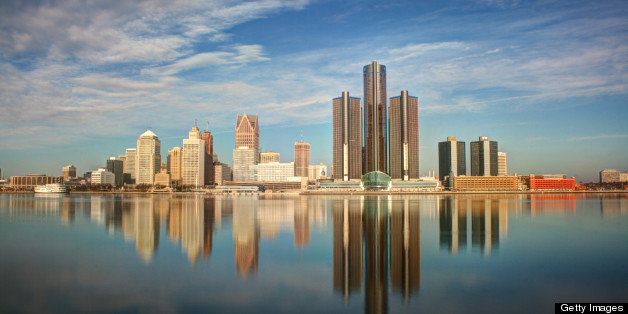
The Federal Reserve Bank of Boston made an announcement on May 3 that has nothing to do with monetary policy or interest rates. For that reason, it may be the most important statement it makes all year. What's being announced, the 'Working Cities Challenge,' is an effort to advance collaborative leadership in Massachusetts’ smaller cities and to support ambitious work to improve the lives of low-income people in those cities. This initiative represents the five things that I believe it takes for America to fix itself:
1. Focus on Cities. America’s cities are the engine for national prosperity and individual economic opportunity. Indeed, for generations, low-income people from around the country and the world viewed our cities as the best path to a better life. But, in recent decades, that has been less true as the systems that made it so have not adequately adapted to changing social, technological, and economic forces. In order to fix America, we must reinvigorate our cities and help them reinvent themselves for the 21 century. The Working Cities challenge aims to do just that, focusing on smaller cities that have to date received less attention and funding from traditional sources. This focus is of particular interest to Living Cities as a collaborative of 22 foundations and financial institutions that have been working together for over two decades on systems-level issues in U.S. cities. Much of our work, including our signature Integration Initiative, has worked to understand how to catalyze large scale change in large cities—like Baltimore, Cleveland, Detroit, Newark and the Twin Cities. We are eager to understand what this looks like for small cities. The learning will be extremely valuable for the field.
2. Unexpected Leadership. Some say the definition of insanity is when you keep doing the same thing over and over and expect a different result. That's what we have been doing for decades around some of our nation's biggest problems. What we need to break the cycle are well-respected organizations willing to lead in new ways. That's what the Federal Reserve Bank of Boston is doing here. While it has long conducted research on what it takes to rebuild communities, deciding to turn that research into action at this critical time for our country matters and should be applauded. Moreover, they have decided to take on this challenge in a really smart way: through a high stakes donor collaborative. In these collaboratives, like Living Cities itself, funders come together around a shared multiyear vision where they not only pool money but talent, knowledge, and decision making power. We're excited to be a part of this effort.
3. Prototype and share knowledge rapidly. New digital media platforms and social networks enable us to produce and share incredible amounts of knowledge with ever greater velocity. Today, there is no reason that what we learn from successful social innovations happening in one place can't be quickly adopted in other places. Yet they rarely are. Two years ago, Living Cities took on this challenge -- a challenge we believe all those committed to social change must embrace. We began a concentrated effort to rapidly prototype and share what we are seeing and learning with a large problem-solving network of other high-performing organizations and individuals across the country. In fact, a large part of the design and approach adopted by the Working Cities Challenge, as highlighted below, are based on what we've learned about what does and doesn't work in similar initiatives taking place in our five-city Integration Initiative and in the 80+ city Strive Network.
4. Collaborate to achieve lasting change. Two of those real-time learnings are at the core of the Working Cities Challenge and critical to the change our country needs --- winners must exemplify and advance cross-sector collaboration and be committed to create deep and lasting change in their communities. Living Cities’ work tells us real change is only possible when local, ‘civic infrastructure’ exists or cross-sector decision-makers come together around one table to set ambitious goals, use data to transform systems, not build more programs, and achieve consistently better outcomes. Interestingly, our experience confirms what a Federal Reserve Bank of Boston report concluded in 2009 about the key to rejuvenating cities: "Industry mix, demographic makeup, and geographic location made less difference to [successful rejuvenation of a city] than the presence of a community leader and collaboration around a vision for the future."
5. Disrupt the Status Quo through Challenges. In a stagnant economy, challenges can be an incredible catalyst for change. The Working Cities Challenge invites 20 cities to apply with the promise of making multiyear grants with awards ranging from $150,000-$700,000. Excitingly, all 20 cities have submitted letters of interest. Final applications will require them to bring cross-sector civic leaders together, agree on an ambitious systems-level outcome, collect data to support problem-solving, and propose likely solutions. Results from other challenges, such as the U.S. Department of Education's Race to the Top, Bloomberg Philanthropies Mayors' Challenge and our own Integration Initiative, suggest that the competition itself has beneficial effects, as many places will make significant regulatory or statutory changes needed in order to be eligible to apply, and others will pursue the innovations proposed in the applications even if they are not selected.
Systems in the U.S. that we always thought were going to produce more opportunities for the next generation than they did for the last no longer do so. Many believe that our ability to solve complex problems and make hard choices is broken. Application of these five elements of the Working Cities Challenge really could fix all that ails us.
